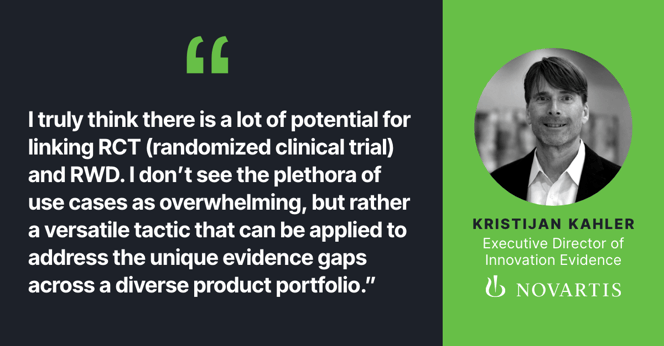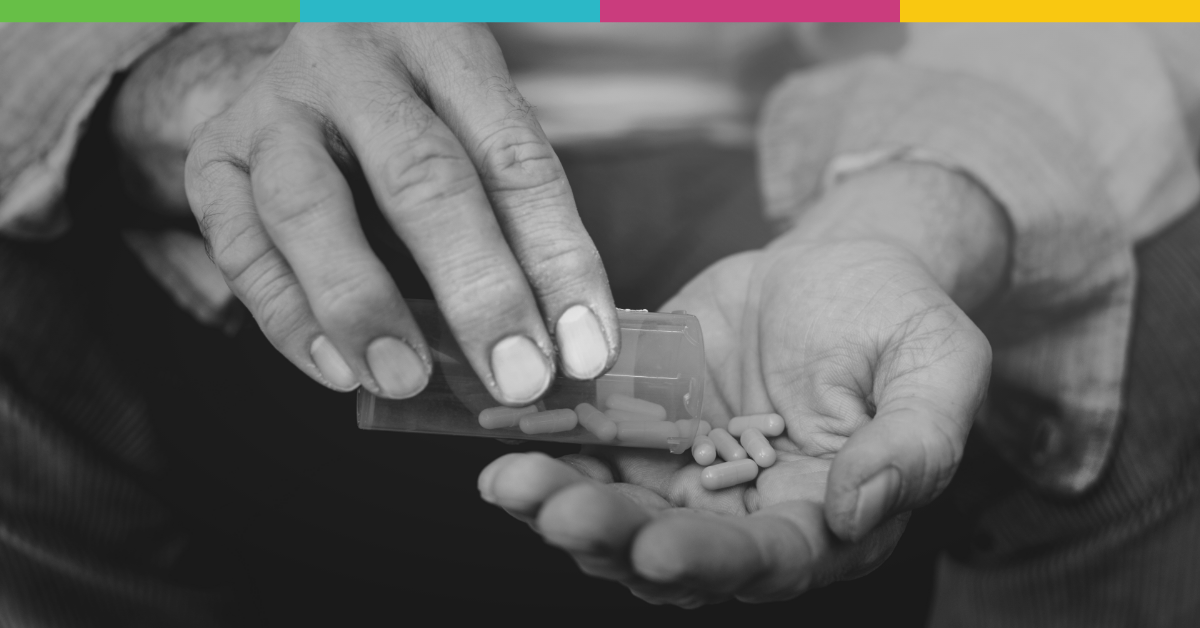An interview with Kristijan Kahler, executive director of innovation evidence at Novartis
While clinical trials are the gold standard for regulatory approval, they do have limitations and pose challenges that real-world data (RWD) could help solve, however, RWD is underutilized today. Michael (Mike) Eckrote, vice president, technical solutions at HealthVerity recently sat down with Novartis’ Kristijan (Kris) Kahler, who’s been leading the drug manufacturer's efforts with regards to all things pertaining to evidence generation and outcomes science through advanced analytics and innovative partnerships, to explore the value that is created from synchronizing a clinical subject to RWD through his lens.
Mike: In recent years, the process of incorporating subject-level RWD to contextualize a patient’s clinical trial journey has come to the forefront. This capability offers researchers the ability to consider patient insights that go beyond the primary investigator and to develop more comprehensive regulatory submissions. Where do you believe we are as an industry in terms of clinical trials more fully adopting RWD? Do you believe this approach will become a standardized approach in the near future?
Kris: There is definitely potential for this approach of linking the data from clinical trial participants to their own real-world data. We are still in the early days, but I do see this as something that should be considered as an evidence-generation approach for most if not all clinical programs. The biggest challenges to solve are the operational aspects involved in making this happen, and ensuring a low hurdle to incorporate in Integrated Evidence Plans, then clinical trial protocols, and all the necessary documents, governance, and finance approval processes.
Mike: As a sponsor considers the potential benefits of a synchronized RWD approach, are there certain types of data (EMR, medical claims, pharmacy claims, labs) that are preferred by researchers? How much do pharma sponsors struggle with discovering where actionable RWD may be retrieved?
Kris: The RWD must be fit for the purpose, which is in turn driven by the specific research questions that need to be addressed for the specific product, and evidence gaps as highlighted by external decision makers (e.g., regulatory bodies, HTA bodies, etc.). Identifying the necessary data in the U.S. is straightforward, however, many phase III clinical trials include sites and patients from multiple countries. Access to RWD in countries outside the U.S., and the ability to create tokens to enable linkage ex-U.S. is one of the key challenges we face when proposing data linkage to clinical trial teams.

Mike: Do certain types of clinical trials lend themselves to an RWD-enhanced approach while other studies require the investigator to be the sole source? With so many wide-ranging use cases, where synchronized subject-level RWD can create an impact in clinical trials, it can be overwhelming for sponsors to understand where they should focus their attention. In your opinion what are the highest impact applications for such an approach?
Kris: It is true, there are many use cases, which is why I truly think there is a lot of potential for linking RCT (randomized clinical trial) and RWD. I don’t see the plethora of use cases as overwhelming, but rather a versatile tactic that can be applied to address the unique evidence gaps across a diverse product portfolio.
Mike: To that end, as sponsors seek out to incorporate RWD into clinical trials, how should they evaluate success? What does good look like?
Kris: We have yet to realize the full utility and value of such linkage. Having well-documented use cases where person-level linked data from RCT and RWD have informed important external stakeholder decisions will go a long way in demonstrating value.
Mike: Lastly, the early evidence of implementing tokenization and accurately synchronizing subjects to their RWD in clinical trials has been exciting, but there are always areas where, as an industry, we can improve. From your perspective, what are the small wins we should pursue to make the process more efficient? If we’re playing the long game, what are some examples of ways we can innovate to really drive industry adoption? What type of tooling would be helpful in managing a more comprehensive process for privacy, governance and data exchange?
Kris: Clinical trial teams are often under tremendous pressure to execute clinical trials on time and on budget. The steps involved in enabling linkage to RWD (e.g., protocol language, consent language, IRB approval, PII management, site training, data management) can be an added burden, so anything that can be done to ensure the hurdles for implementation are either extremely low or non-existent should be a priority.
Thank you to Kris for meeting with us to discuss the synchronization of clinical trial and RWD. To learn how HealthVerity FLOW, a HIPAA-compliant, 21 CFR 11-certified solution that synchronizes clinical trial participants with their RWD while governing all aspects of identity resolution, patient privacy, and data usage rights, can help you seamlessly exchange both identifiable and de-identified data click here.





